Photos: Gladiators of the Roman Empire
Gladiators of the Empire

There were several different types of gladiators who fought at the time of the Roman Empire. Wearing different kinds of armor, and welding a mix of weapons, these fighters were pitted against each other in the arena and often enough met their death there. In this photo gallery, Live Science takes a look at some of the more common types of gladiators that fought in the era of the empire.
Female Gladiator
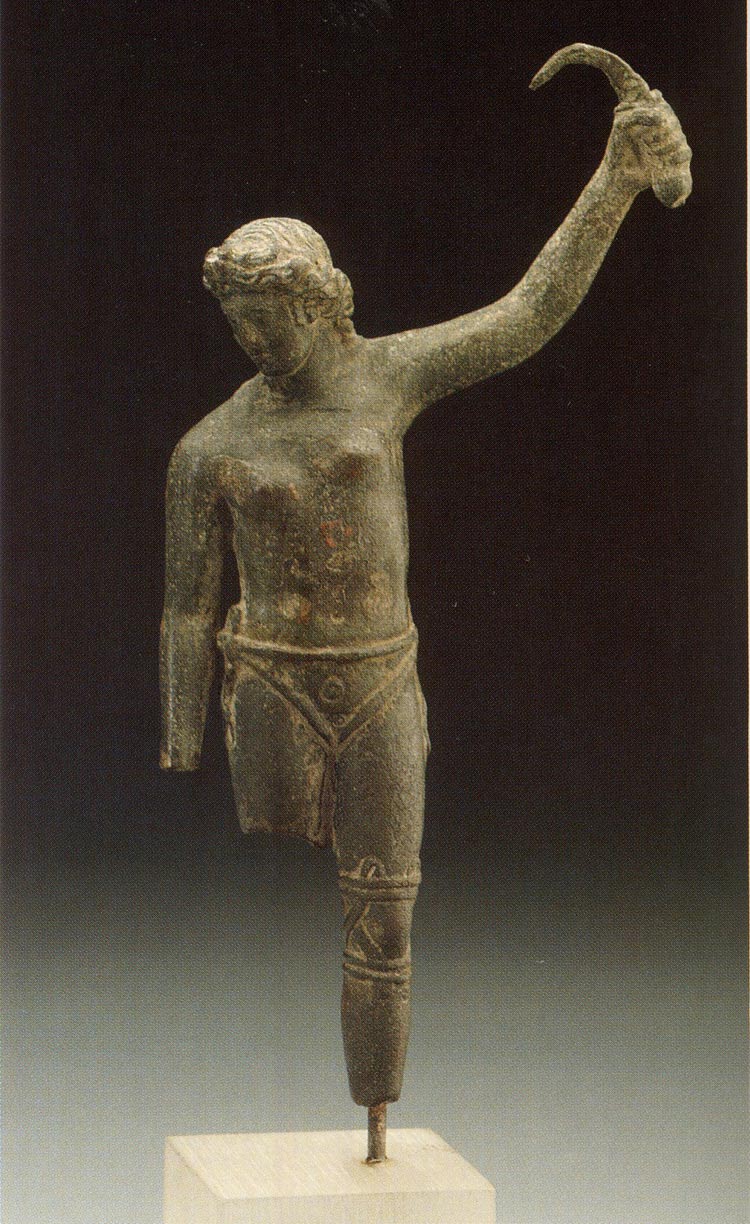
Researcher Alfonso Manas has identified a small bronze statue, now in a museum in Germany, as being a depiction of a female gladiator. If this is correct it will be only the second image of a female gladiator known to exist. She is shown raising a small curved sword, known as a sica, in victory, and looking down at the ground, presumably at her fallen opponent, Manas reports in the International Journal of the History of Sport. [Read the full story about the female gladiator]
Thraex
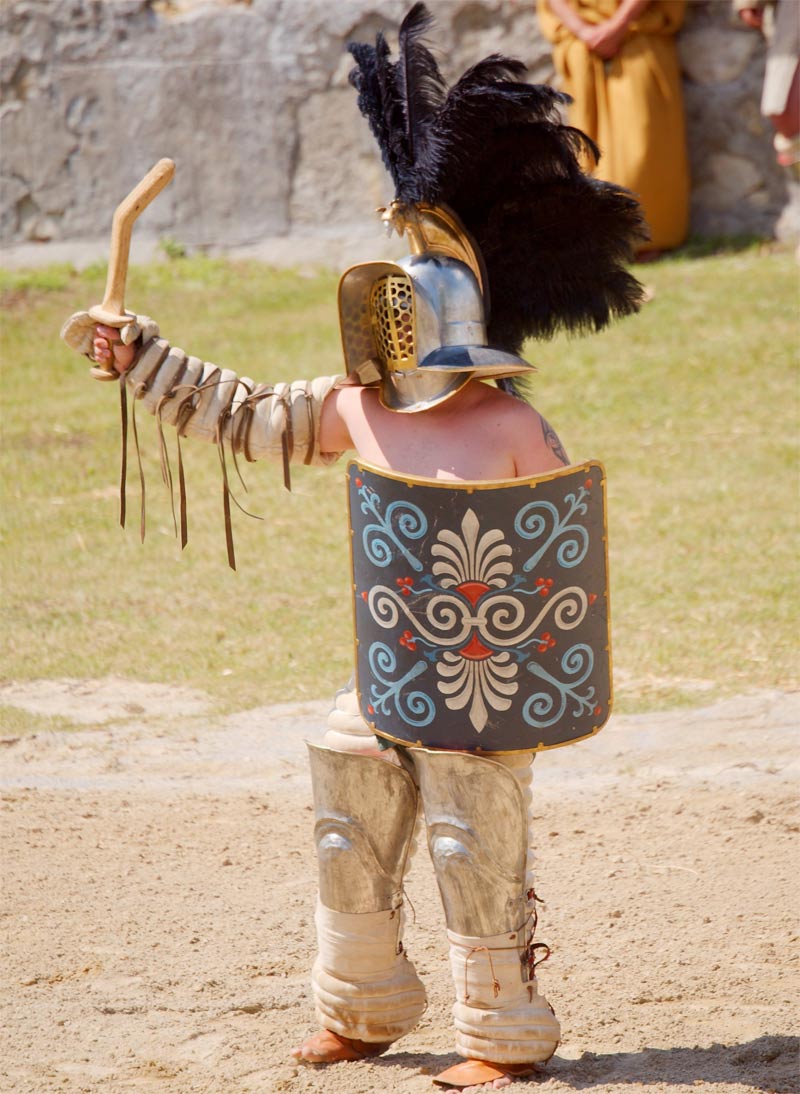
The newly identified female gladiator appears to have fought as a Thraex, a type of gladiator that was equipped with a sica (short curved sword), a small oblong shield and a helmet with an image of a griffin. Notably the female gladiator is depicted without the helmet, possibly because she took it off for the victory gesture. This picture shows a modern-day re-creation of a Thraex gladiator about to compete in a mock fight; notice that men, when they competed as a Thraex, fought topless as well.
Eques Gladiator
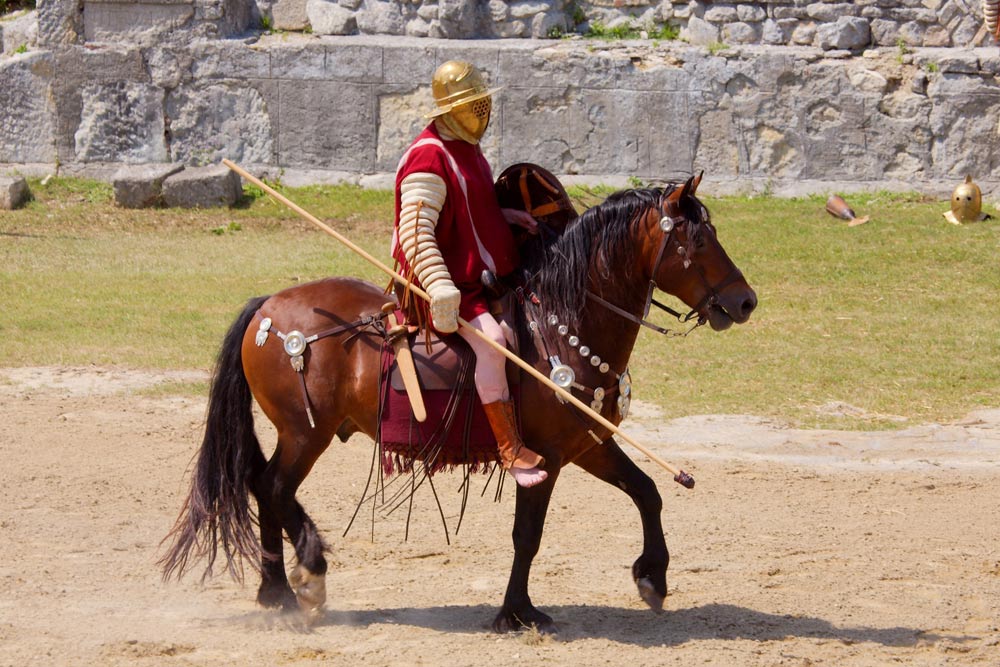
One early medieval source suggests that the Eques, when they fought, were the opening act in gladiator games. "Two equites, preceded by military standards, entered the arena, one from the west, the other from the east, riding on white horses, wearing smallish golden helmets and carrying light weapons," writes Isidore of Seville in the seventh century. Presumably they started fighting with lances and switched to swords if dismounted. This picture shows a modern-day re-creation of what they may have looked like.
The Provocator
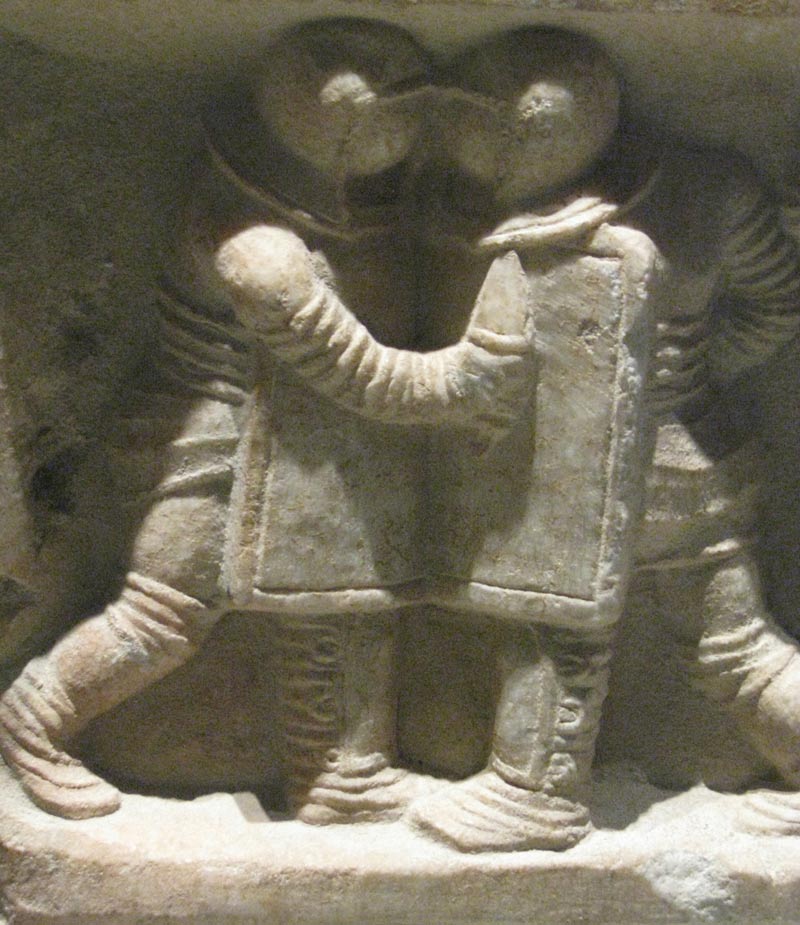
The Provocator was a gladiator who wore a substantial amount of armor. In addition to his sword he was equipped with a breastplate and wore a helmet with visor and neck guard, along with a rectangular shield. He had a greave (shin guard) on his left knee. This photo, from a relief now in the Royal Ontario Museum, appears to show two Provocators fighting.<
Hoplomachus
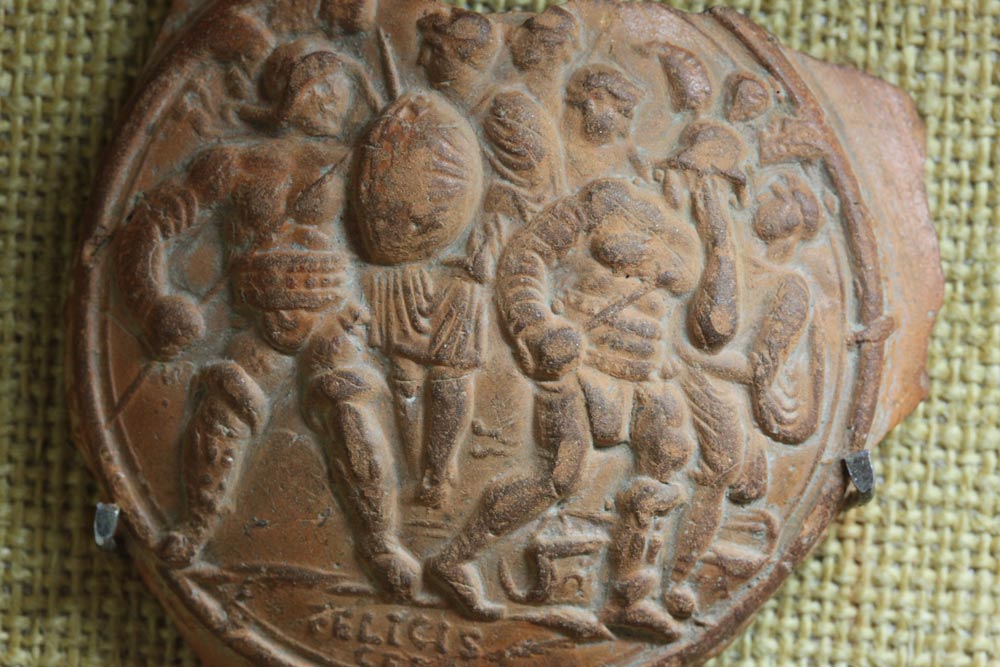
The Hoplomachus was similar to an ancient Greek hoplite. Armed primarily with a thrusting spear, he carried a small circular shield and wore an armguard on his right arm. In this fragment from an oil lamp the gladiator at left appears to be a Hoplomachus.
Murmillo
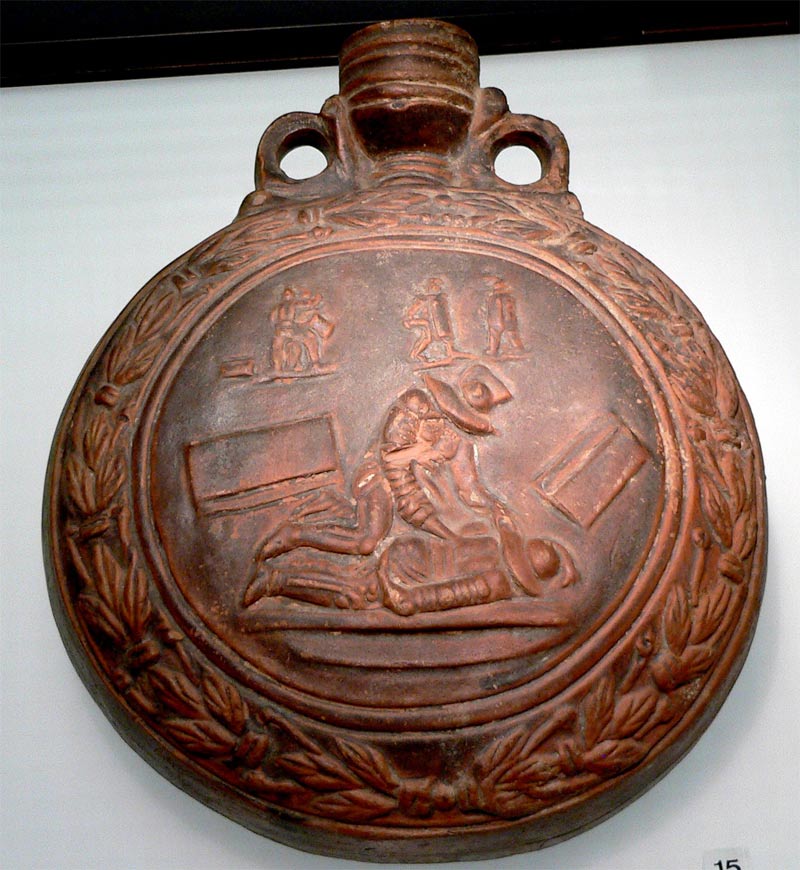
The Murmillo wore a visored helmet with a distinctive crest at the top. He was equipped with a large shield that was oblong in shape. He was often matched up against the Thraex and, because of his larger shield, had the advantage when facing him. This flask shows a Murmillo who has just defeated a Thraex.
Sign up for the Live Science daily newsletter now
Get the world’s most fascinating discoveries delivered straight to your inbox.
Retiarius
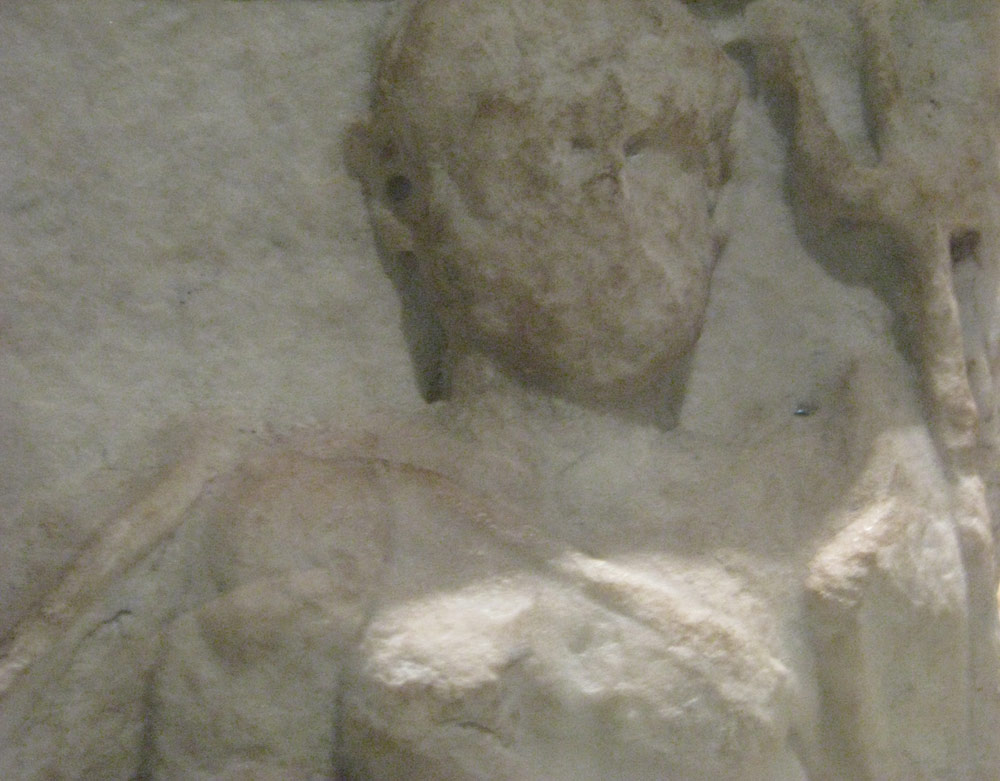
The Retiarius, a “net man,” used no shield and welded a trident, dagger and net in combat. He also had a metal protector on his left shoulder. In battle he was often pitted against the secutor. Typically they wore no helmet.
Essedarius
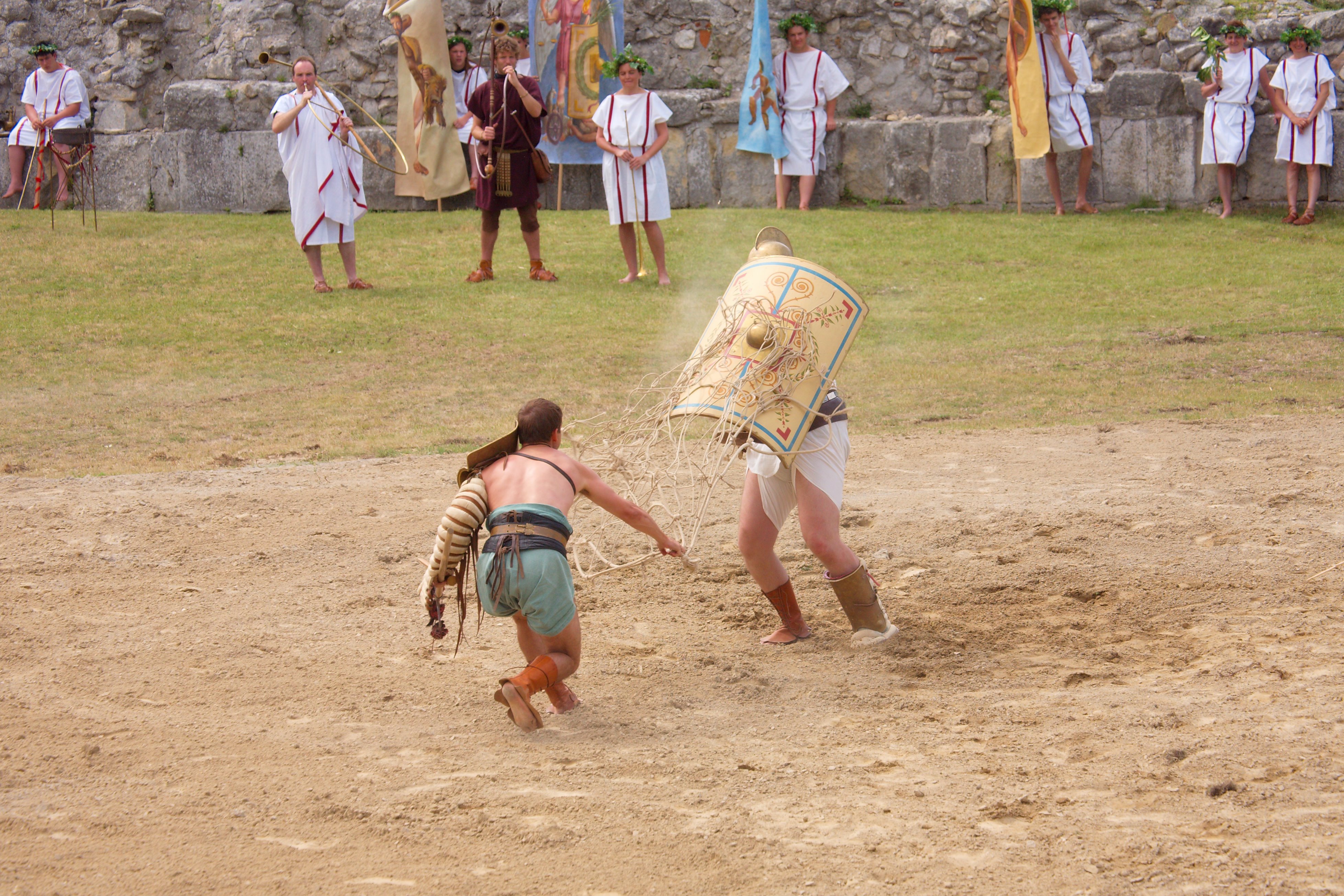
An Essedarius, "one who fought from a chariot," was an individual who started the match in a chariot but could have finished it on foot. The lack of surviving representations means that scholars know little about their tactics or their equipment. Presumably two of these chariot gladiators would have fought each other. This photo shows a re-creation of two Roman chariots from a show in Jordan.
The End of Gladiators
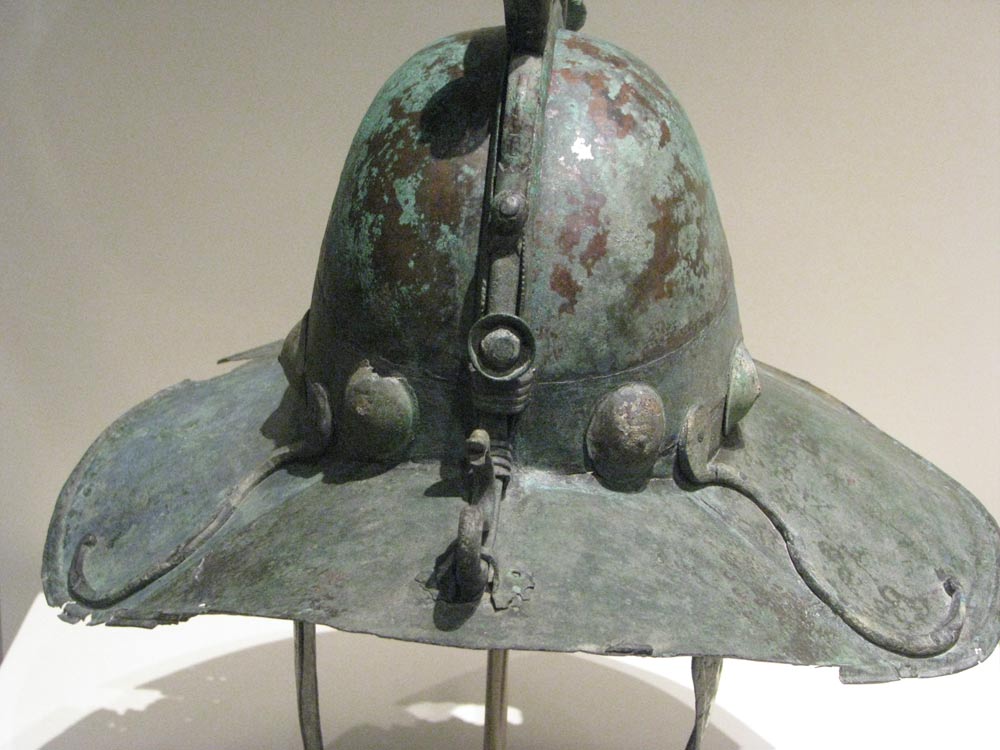
Gladiators, in all their forms, were popular, however cruel, entertainment throughout Roman history. The games died out in the early 5th century when the Emperor Honorius put a ban on them. Ironically Honorius’s rule would also see the sacking of Rome by the Visigoths, one of many events that would eventually culminate in the end of the Western Roman Empire. This gladiator helmet, now on display in the Royal Ontario Museum, is believed to date to the last century of these games.
Note: "Gladiators and Spectacle in Ancient Rome" (Pearson, 2008) by Professor Roger Dunkle, of Brooklyn College in New York, was an important source for this photo gallery.

Owen Jarus is a regular contributor to Live Science who writes about archaeology and humans' past. He has also written for The Independent (UK), The Canadian Press (CP) and The Associated Press (AP), among others. Owen has a bachelor of arts degree from the University of Toronto and a journalism degree from Ryerson University.









